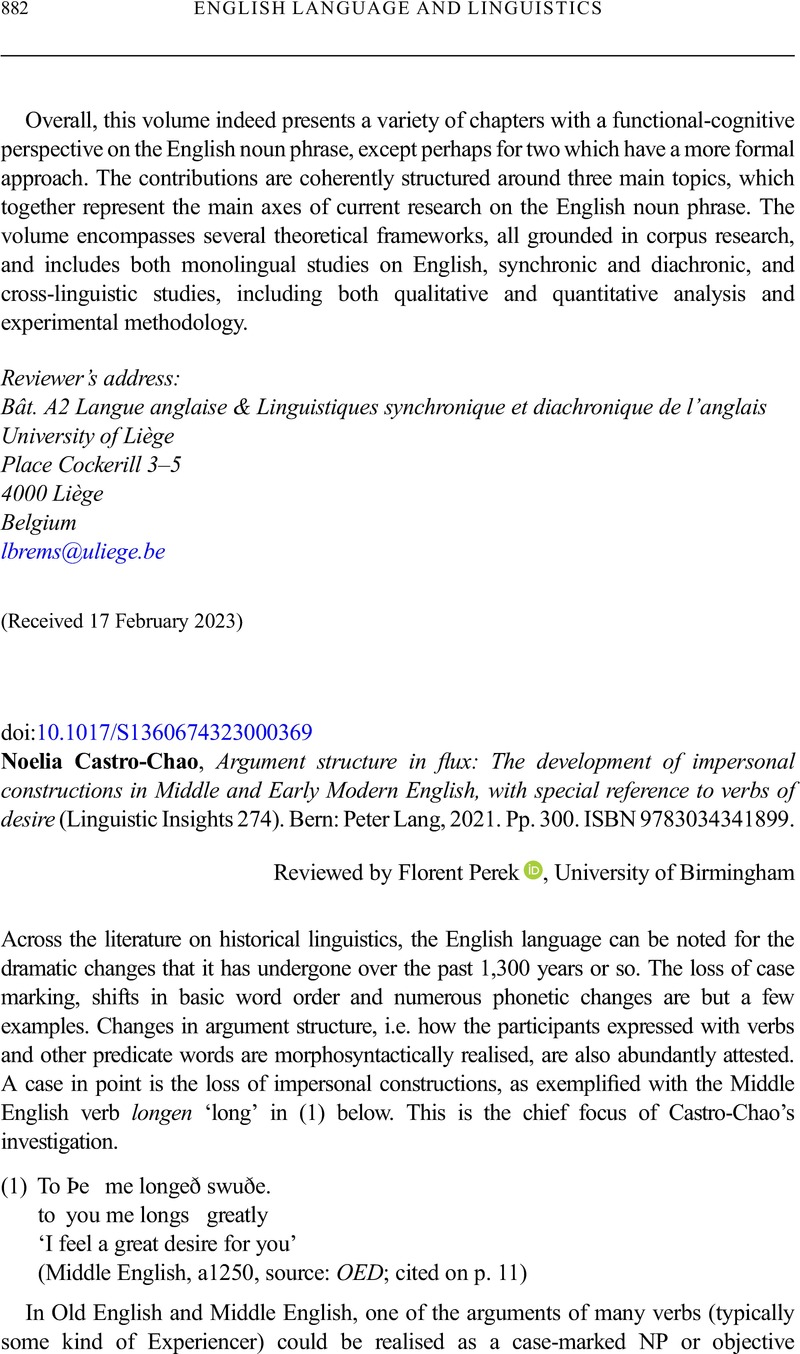No CrossRef data available.
Article contents
Noelia Castro-Chao, Argument structure in flux: The development of impersonal constructions in Middle and Early Modern English, with special reference to verbs of desire (Linguistic Insights 274). Bern: Peter Lang, 2021. Pp. 300. ISBN 9783034341899.
Review products
Noelia Castro-Chao, Argument structure in flux: The development of impersonal constructions in Middle and Early Modern English, with special reference to verbs of desire (Linguistic Insights 274). Bern: Peter Lang, 2021. Pp. 300. ISBN 9783034341899.
Published online by Cambridge University Press: 09 October 2023
Abstract
An abstract is not available for this content so a preview has been provided. Please use the Get access link above for information on how to access this content.

Information
- Type
- Book Review
- Information
- Copyright
- Copyright © The Author(s), 2023. Published by Cambridge University Press
References
Dowty, David R. 1991. Thematic proto-roles and argument selection. Language 67(3), 547–619.CrossRefGoogle Scholar
Goldberg, Adele E. 1995. Constructions: A Construction Grammar approach to argument structure. Chicago: University of Chicago Press.Google Scholar
Jespersen, Otto. 1927. A Modern English grammar on historical principles, part III: Syntax, vol. 2. Copenhagen: Ejnar Munksgaard.Google Scholar
Levin, Beth. 1993. English verb classes and alternations: A preliminary investigation. Chicago: University of Chicago Press.Google Scholar


